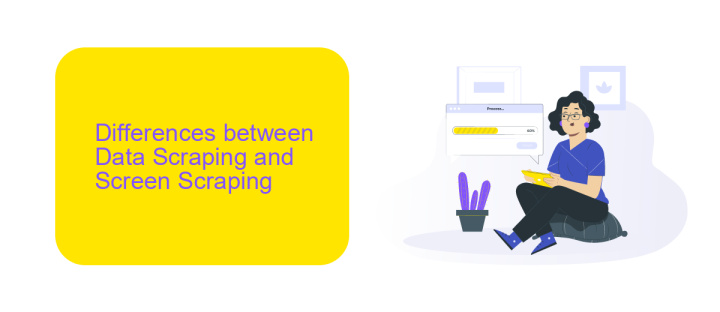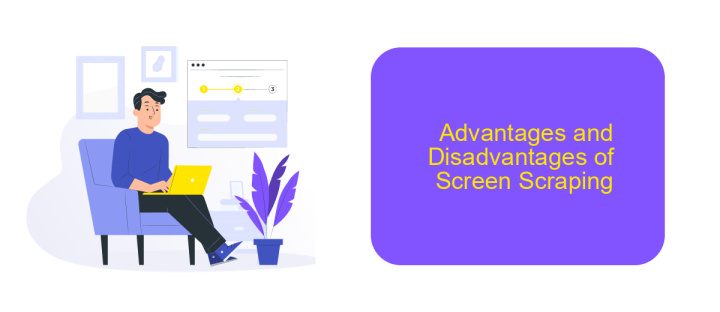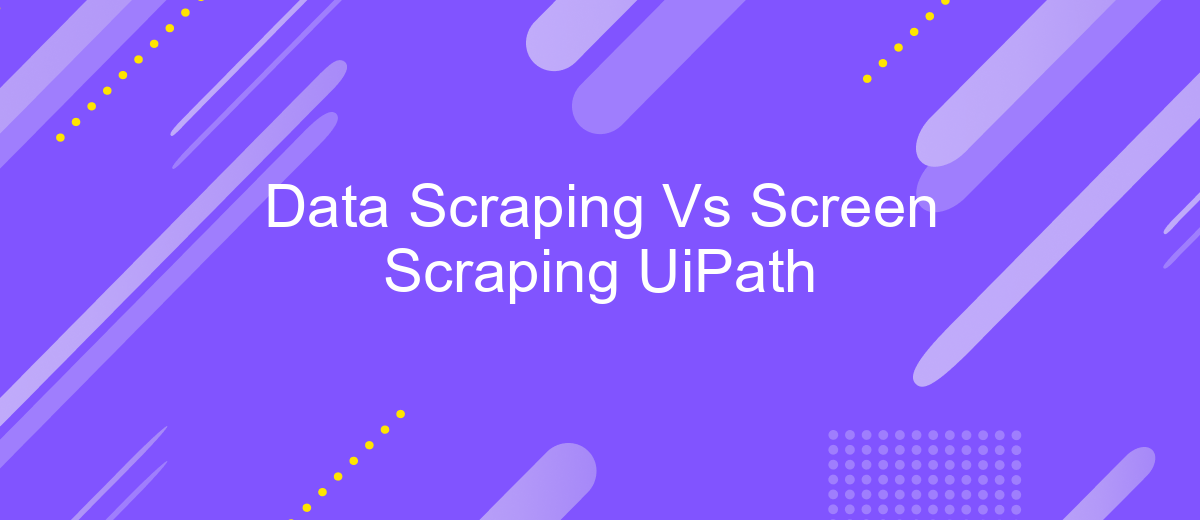Data Scraping Vs Screen Scraping UiPath
In today's data-driven world, businesses rely heavily on extracting information from various sources. UiPath, a leading RPA tool, offers robust solutions for both data scraping and screen scraping. Understanding the differences between these two methods is crucial for optimizing data collection processes. This article explores the nuances of data scraping versus screen scraping with UiPath, helping you choose the best approach for your needs.
Introduction
In today's digital age, data extraction has become a crucial aspect for businesses and organizations. Two popular methods for extracting data from websites and applications are Data Scraping and Screen Scraping. Both techniques have their unique advantages and use cases, making it essential to understand their differences and applications.
- Data Scraping: This method involves extracting structured data from websites, typically through APIs or web scraping tools. It is highly efficient for obtaining large volumes of data in a structured format.
- Screen Scraping: This technique captures data displayed on the screen, often used when APIs are unavailable. It mimics human interaction with the user interface to gather the required information.
Choosing between Data Scraping and Screen Scraping depends on various factors such as the availability of APIs, the complexity of the data, and the specific needs of the project. Tools like UiPath can facilitate both methods, offering robust solutions for data extraction. Additionally, services like ApiX-Drive can streamline integrations, making it easier to automate data workflows and enhance efficiency.
Differences between Data Scraping and Screen Scraping

Data scraping and screen scraping are two distinct methods employed to extract information from various sources, but they differ significantly in their approach and application. Data scraping involves extracting structured data from websites or databases using APIs or web scraping tools. This method is efficient and accurate, as it directly accesses the underlying data, ensuring high-quality results. Tools like UiPath facilitate data scraping by automating the extraction process, making it easier to handle large volumes of data with minimal manual intervention.
On the other hand, screen scraping captures data displayed on a screen, often using optical character recognition (OCR) technology to interpret the visual content. This method is generally used when direct access to the underlying data is not possible. Although screen scraping can be useful for extracting information from legacy systems or applications without APIs, it is typically less reliable and more prone to errors compared to data scraping. Services like ApiX-Drive can help integrate various systems, potentially reducing the need for screen scraping by providing more direct data access options.
Advantages and Disadvantages of Data Scraping

Data scraping is a powerful technique for extracting structured data from websites and other online sources. It offers several advantages, including automation of data collection, time-saving, and the ability to handle large volumes of data efficiently. Additionally, data scraping can be integrated with various services like ApiX-Drive to streamline the process and enhance productivity.
- Automation: Data scraping automates the data extraction process, reducing manual effort and the likelihood of human error.
- Efficiency: It can process large datasets quickly, making it ideal for businesses that need to analyze vast amounts of information.
- Integration: Tools like ApiX-Drive facilitate seamless integration with other applications, making the data more accessible and usable.
However, data scraping also has its disadvantages. It can sometimes lead to legal issues if not done in compliance with website terms of service. Additionally, websites frequently change their structures, which can break the scraping scripts and require constant maintenance. Finally, data quality can vary, necessitating further cleaning and validation to ensure accuracy.
Advantages and Disadvantages of Screen Scraping

Screen scraping is a technique used to extract data from the display output of another application. It is particularly useful when dealing with legacy systems where direct access to the database is not possible. One of the major advantages of screen scraping is its ability to work with any application that can be rendered on a screen, making it highly versatile. Additionally, it can be implemented relatively quickly without requiring extensive changes to existing systems.
However, screen scraping also has its disadvantages. The primary drawback is its dependency on the user interface, which can change frequently and disrupt the scraping process. This makes it less reliable for long-term use. Furthermore, screen scraping can be slower compared to other data extraction methods, as it involves rendering and parsing the visual elements of an application.
- Advantages:
- Works with any application viewable on a screen
- Quick implementation
- No need for access to the underlying database
- Disadvantages:
- Highly dependent on UI changes
- Less reliable for long-term use
- Slower data extraction process
In summary, screen scraping offers a flexible solution for data extraction, especially when dealing with legacy systems or applications without database access. However, its dependency on the user interface and potential performance issues must be carefully considered. For more robust data integration solutions, services like ApiX-Drive can be explored to streamline and automate data workflows.
Use Cases for Data Scraping and Screen Scraping in UiPath
Data scraping in UiPath is particularly useful for extracting structured data from websites, databases, or APIs. It is commonly applied in scenarios where large volumes of data need to be collected and analyzed, such as market research, financial data analysis, and customer sentiment analysis. By leveraging UiPath's data scraping capabilities, businesses can automate the extraction process, ensuring accuracy and saving valuable time. Additionally, tools like ApiX-Drive can be integrated to streamline the data transfer from various sources directly into your workflows, further enhancing efficiency.
Screen scraping, on the other hand, is ideal for scenarios where data extraction needs to occur from applications that do not provide an API or structured data access. This technique is often used for legacy systems or applications where data is displayed on the screen but not accessible otherwise. UiPath's screen scraping can capture this data accurately, making it useful for automating repetitive tasks such as data entry, report generation, and system monitoring. By incorporating screen scraping into their automation strategies, organizations can significantly reduce manual effort and minimize errors.
- Automate the work of an online store or landing
- Empower through integration
- Don't spend money on programmers and integrators
- Save time by automating routine tasks
FAQ
What is the main difference between Data Scraping and Screen Scraping in UiPath?
When should I use Data Scraping over Screen Scraping?
Can Data Scraping and Screen Scraping be used together in UiPath?
How can I automate data integration from multiple sources using Data Scraping?
What are the limitations of Screen Scraping in UiPath?
Routine tasks take a lot of time from employees? Do they burn out, do not have enough working day for the main duties and important things? Do you understand that the only way out of this situation in modern realities is automation? Try Apix-Drive for free and make sure that the online connector in 5 minutes of setting up integration will remove a significant part of the routine from your life and free up time for you and your employees.


